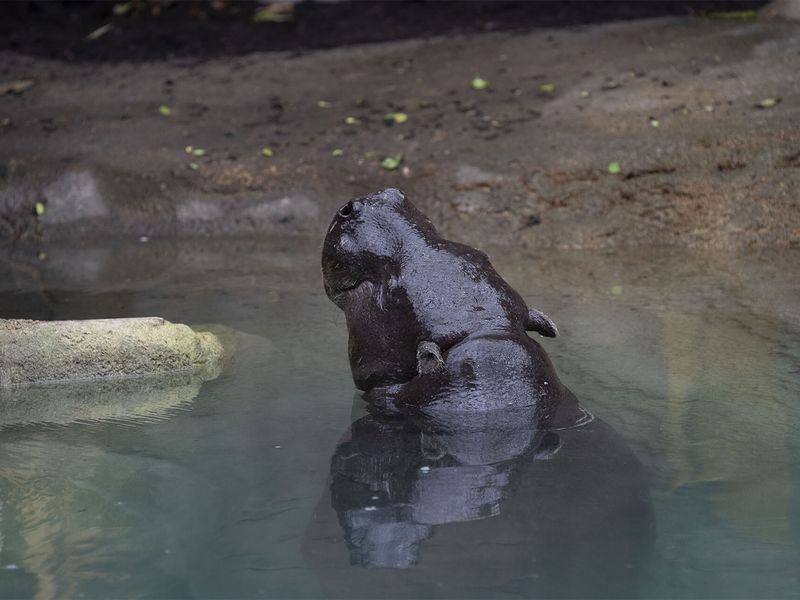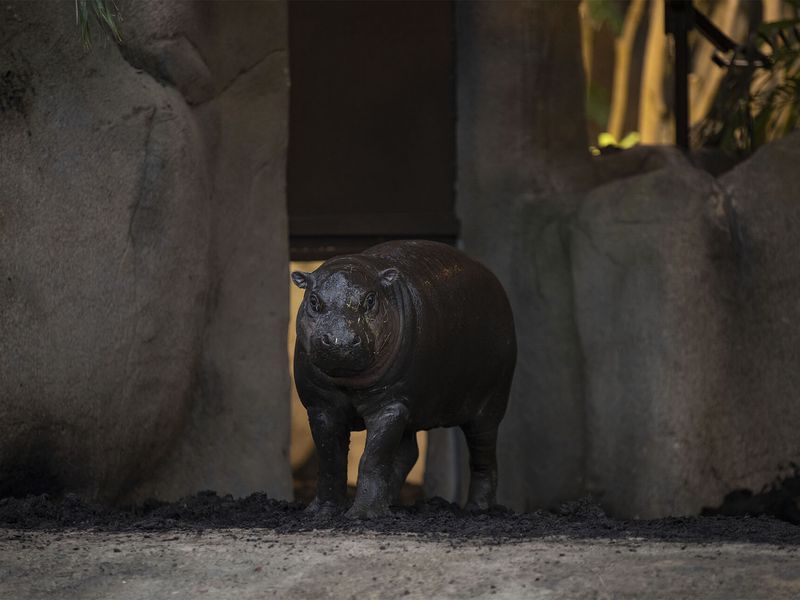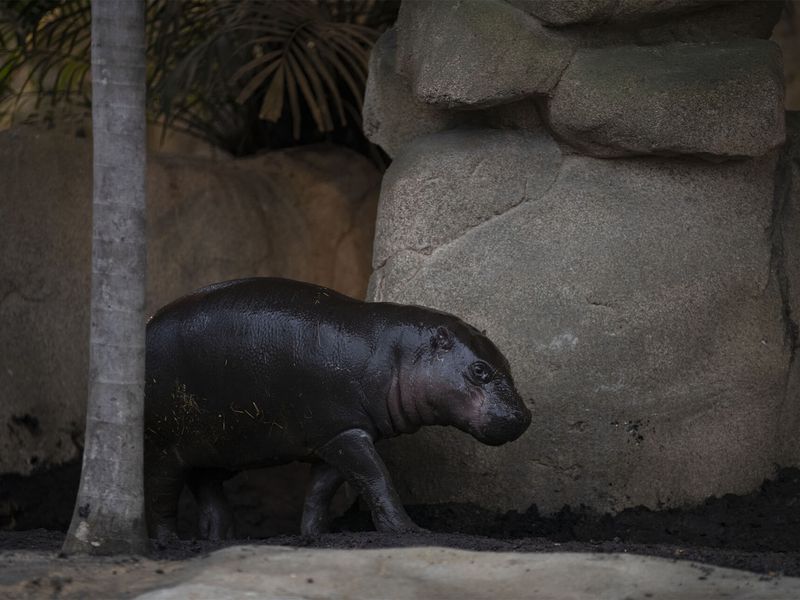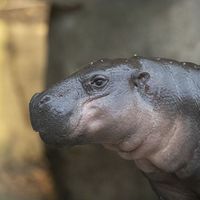« The pygmy hippopotamus was only discovered in the 19th century. »
A miniature hippopotamus
Discover an incredible mammal which, despite its small size, has it all!
The pygmy hippopotamus could easily be mistaken for the common hippopotamus (also called the river hippopotamus), except that it is much smaller. At the withers, it is only half as tall as its cousin and is less than a quarter of the weight of the common hippo! Its massive body has a rounded back and its hindquarters are higher than its withers. This characteristic helps it to move through the dense undergrowth where it lives. Although it is less adapted for aquatic life than the common hippopotamus, the pygmy hippo possesses nostrils and ears that can be closed before taking a dive!

Did you know?
Carnet de Bord - Ep11
A quick dip for the pygmy hippos
Having just arrived in Beauval’s equatorial dome, the pygmy hippos, Luna and Robert, enjoy their first bath!
The Beauval Nature association
For the past 10 years, the Beauval Nature association has joined forces with field workers to support them in their primary mission of species conservation. Beauval works closely with numerous conservation and research programmes around the world to study and protect endangered species. This everyday action takes place in order to protect our biodiversity.



Sponsor our pygmy hippos
Establish a strong bond with your favourite animal whilst supporting conservation programmes through the Beauval Nature association!
Endangered
Learn more about the species
-
HerbivoreDiet
-
6 to 6½ monthsGestation period
-
1 youngLitter size
-
Freshwaters, Wetlands, Tropical forestsHabitat
Stealth that never ceases
Unusual but natural sun protection
Pygmy hippo feeding behaviour

Take full advantage of the experience thanks to our mobile application!
Find out more











